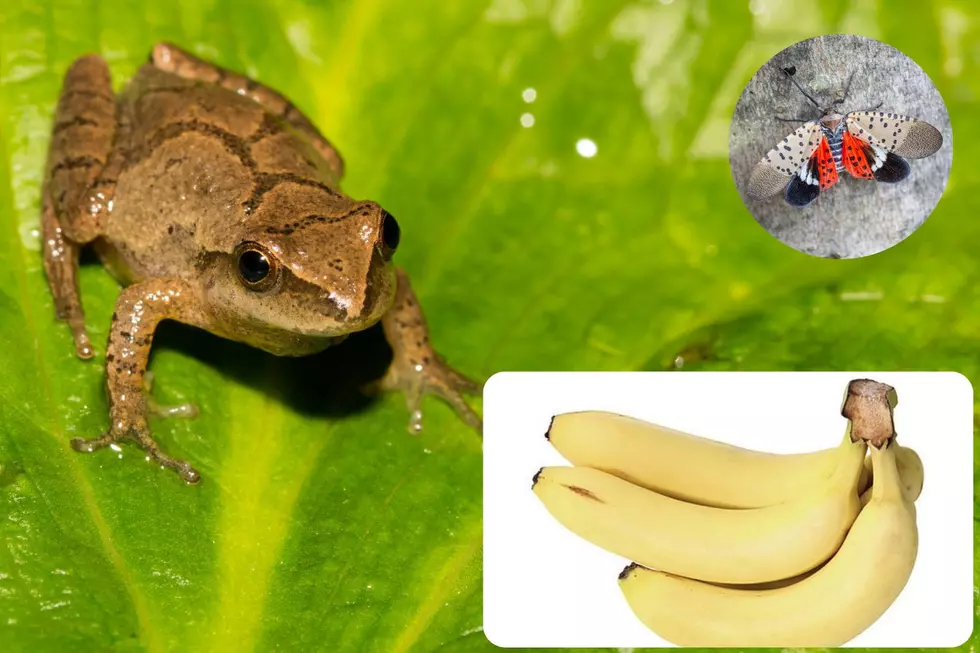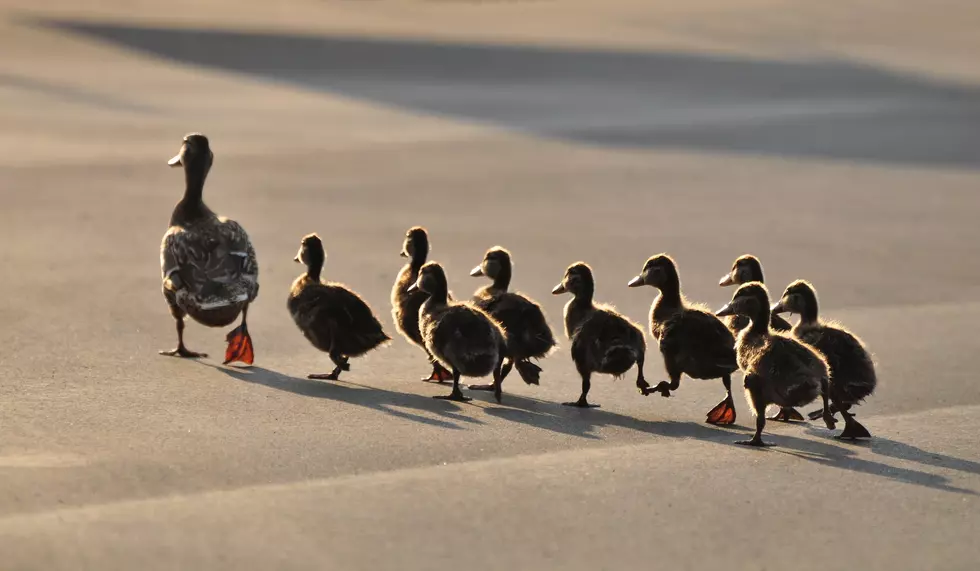
How bananas and a frog can be examples of invasive species in NJ
Sometimes you never know what surprises will pop up after a trip to your local supermarket. On occasion, those trips might lead to an unexpected purchase that you might not be aware of until you get home.
One of those unexpected trips was recently reported overseas after a British family purchased bananas from their local grocery store. The bananas were inside their own plastic packaging, much like how we'd sometimes find bundles of bananas here in the United States.
But this bag of bananas had something more in them than the yellow fruit itself. Also inside was a small tree frog that had traveled a far distance just to get to this British family home.
A long trip overseas in fact. This little frog came all the way from the Dominican Republic, which is where the bananas were imported from. Somehow, this little tree frog managed to get into the package before it was sealed up. Even more surprising than that was the fact that this little frog survived the trip.
What's more, this little tree frog appeared to be doing well considering what it just went through. The homeowners quickly called animal rescue and didn't touch or let the frog go free.
A happy ending for this story, and a good laugh to share with family and friends. It's incredible though how far away this little tree frog traveled, and how its fate could've ended differently.
Now how does this relate to New Jersey? Although this particular story doesn't, it's the situation itself that could cause problems here in the Garden State. One prime example? Just look at the issues we're having now with the spotted lanternfly.
Although the spotted lanternfly might not have traveled to our country in a bag of bananas, it does point to how easily different species do move around the globe. Sometimes the story ends well as it did with the little tree frog. And other times, it ends up playing out like how it did with the spotted lanternfly.
According to nj.com, It's believed that the spotted lanternfly arrived in the United States "from China on a stone shipment in 2012." Think about that for a moment. A stone shipment is all it can take for an invasive species to hitch a ride overseas.
Another way species can travel from country to country is in crates aboard airplanes, trains, or ships. And it doesn't always have to be the actual living species itself. Sometimes, just the right amount of eggs make their way over.
Lumber is another way this could possibly happen. Such as the case of the spotted lanternfly since it lays its egg masses on trees. If a tree containing the eggs gets cut down and shipped to another part of the country, those eggs could potentially survive the trip and eventually hatch in a new environment.
And that's the risk when it comes to our everyday lives. On occasion, some of these species are being introduced to different areas of the world with disastrous results.
Now, could this have happened with this little frog? Perhaps, if it was pregnant and shipped to another region of the world that was suitable for its survival. Or if one male and one female happened to make their way across, thus potentially causing bigger problems down the road.
In the case of our little frog that made its way to Britain, it probably wouldn't have survived since the climate is dramatically different there compared to its home in the Dominican Republic. Still, it does highlight how some species can be introduced by accident in an area they don't belong.
Click here if you'd like to read more about the little frog who traveled across the Atlantic and survived. Luckily, the family who found it did the right thing and avoided releasing it into the wild.
LOOK: 30 fascinating facts about sleep in the animal kingdom
LOOK: Stunning animal photos from around the world
More From 105.7 The Hawk










